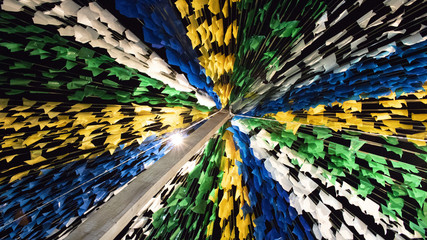Powerpoint Save Vetorial Art
Vector and Raster GraphicsRaster or bitmap graphics are commonly used for photos and other images. They represent an image that's essentially a grid of colored pixels. Adobe Photoshop's PSD files are an example of raster graphics, as are other common formats such as Windows BMP files, JPEG and PNG files.Vector images describe mathematical relationships between lines, curves and points in an image. They're generated by many drawing programs, including Adobe Illustrator, and the user can easily scale them up or down in size without much distortion. Common vector formats include Illustrator's AI files, SVG files and Adobe EPS files. Convert PSD to Vector FormatOne way to turn a Photoshop file into a vector graphics file is to simply export the layers as SVG or other vector graphics formats, using Photoshop itself.A PSD file can contain multiple layers, each of which is essentially an image or a part of an image that can be overlaid on top of other layers. Generally, you'll merge the layers to create a final image or you can export individual layers in a format of your choice.
- Powerpoint Save Vetorial Artwork
- Powerpoint Save Vetorial Art Free
- Powerpoint Save Vetorial Art Center
Powerpoint Save Vetorial Artwork

Export the layers you wish to have in vector format by right-clicking the layer, clicking 'Export As' and choosing the SVG option.SVG files can be opened via a variety of graphics programs, including Adobe Illustrator and the free tool Inkscape, as well as most contemporary Web browsers. SVG are also a text-based format, using a language that's somewhat similar to HTML, which is used for editing Web pages, so if you're familiar with the format, you can open them with a text-editing tool to make changes to colors, lines and other attributes of the image. PSD to Vector in IllustratorIf you use Adobe Illustrator, you can use that program to vectorize a PSD file or another raster-style image and then to convert it into a vector graphics format.You can open a Photoshop PSD file in Illustrator, using the 'Open' option in the 'File' menu. You'll be prompted to load layers as separate objects or to flatten layers into one combined layer. Once you've loaded the file, you can use the 'Image Trace' button to convert the image into a vector graphic.You can choose various options, including the number of colors to include in the image and to specify how detailed the image trace should be. Adjust the parameters to find a parameter that makes your image look good in vector format.Once you're satisfied, you can save the traced image as an Adobe Illustrator file or you can export it in other common vector graphics formats, including SVG.
Creating Images as VectorIf you're working with an image already in raster format such as a photo, it often makes sense to edit it in Photoshop or a in similar tool, and then to convert it to vector graphics formats, if needed.On the other hand, if you're creating an image from scratch using digital drawing tools, you may prefer to work in vector graphics formats and with tools that primarily in these formats. This will save you the work of converting your work later on.
Powerpoint Save Vetorial Art Free

Powerpoint Save Vetorial Art Center

In addition to Illustrator, Corel Draw and Inkscape are common tools for working with vector graphics.